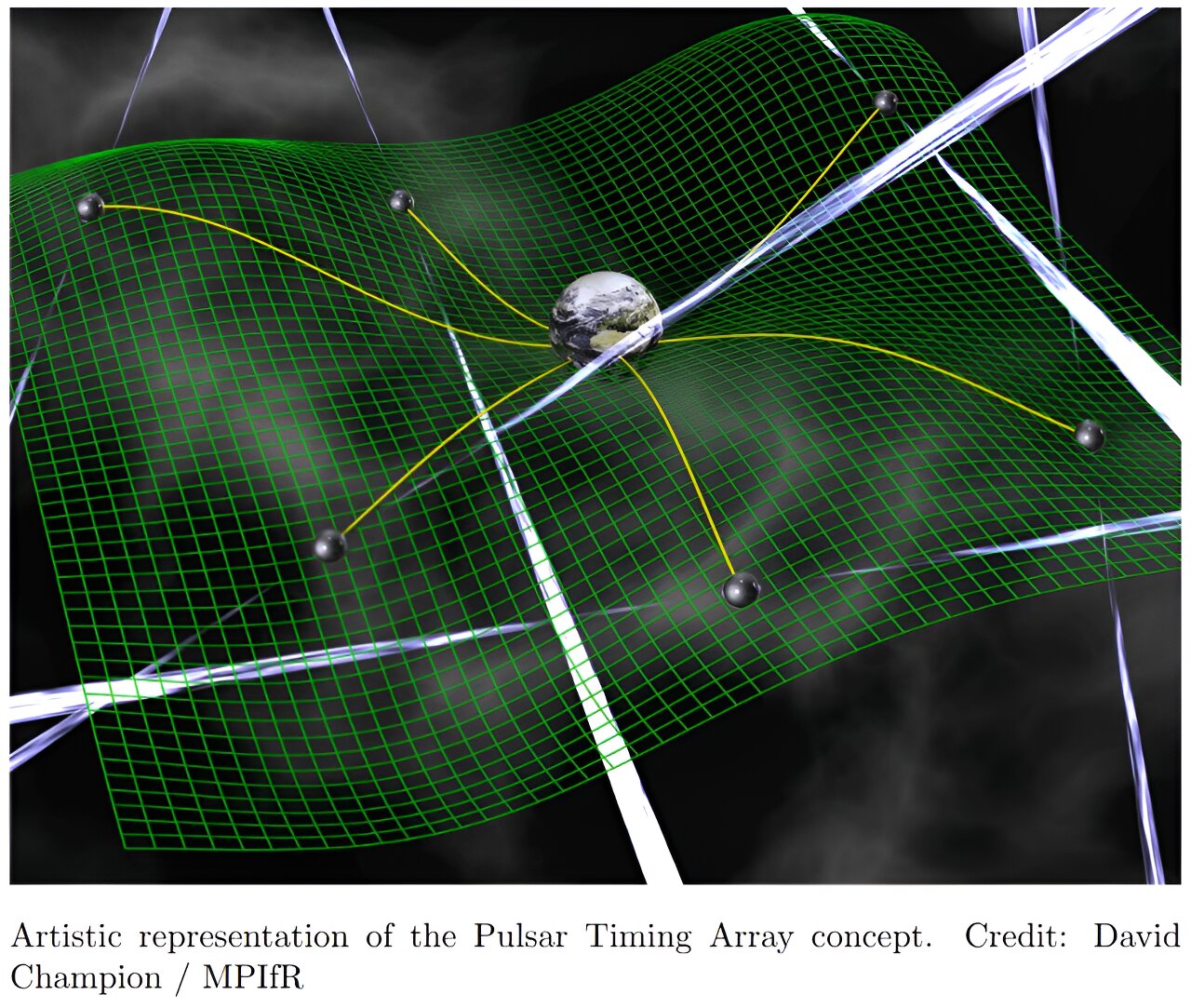Dark matter, composed of particles that do not reflect, emit or absorb light, is predicted to make up most of the matter in the universe. Its lack of interactions with light, however, prevents its direct detection using conventional experimental methods.
Physicists have been trying to devise alternative methods to detect and study dark matter for decades, yet many questions about its nature and its presence in our galaxy remain unanswered. Pulsar Timing Array (PTA) experiments have been trying to probe the presence of so-called ultralight dark matter particles by examining the timing of an ensemble of galactic millisecond radio pulsars (i.e., celestial objects that emit regular millisecond-long radio wave pulses).
The European Pulsar Timing Array, a multinational team of researchers based at different institutes that is using 6 radio-telescopes across Europe to observe specific pulsars, recently analyzed the second wave of data they collected. Their paper, published in Physical Review Letters, sets more stringent constraints on the presence of ultralight dark matter in the Milky Way.
“This paper was basically the result of my first Ph.D. project,” Clemente Smarra, co-author of the paper, told Phys.org. “The idea arose when I asked my supervisor if I could carry out research focusing on gravitational wave science, but from a particle physics perspective. The main aim of the project was to constrain the presence of the so-called ultralight dark matter in our galaxy.”
Ultralight dark matter is a hypothetical dark matter candidate, made up of very light particles that could potentially address long-standing mysteries in the field of astrophysics. The recent study by Smarra and his colleagues was aimed at probing the possible presence of this type of dark matter in our galaxy, via data collected by the European Pulsar Timing Array.
2023-11-24 19:41:02
Article from phys.org rnrn
